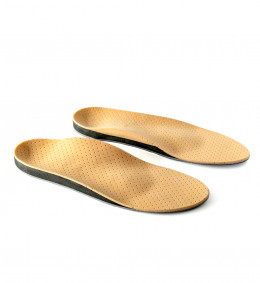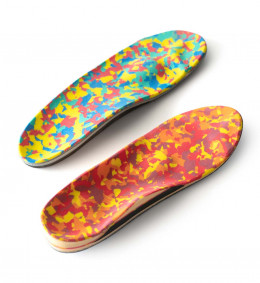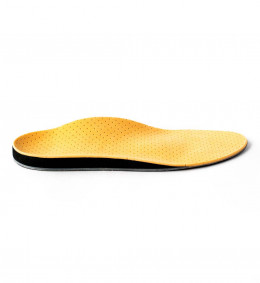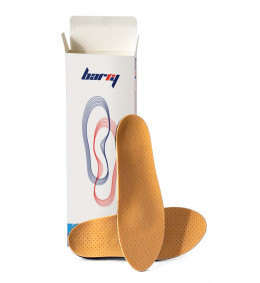Insoles individual, orthopedic
Barry individual orthopedic insoles are made taking into account the anatomical features of the structure, diseases and foot injuries in patients.
They are designed to correct, fix and unload certain areas of the foot, which partially or completely do not function according to the laws and norms of foot biomechanics, which in turn leads to various diseases of the entire human musculoskeletal system.
An individual approach to each patient separately, gives us the opportunity to solve problems associated with the postoperative period of treatment of diseases and injuries of the foot, existing functional disorders, consequences associated with genetic and congenital diseases, changes due to professional activities, endocrine diseases (diabetic foot), occupational sports, etc.
As our experience has shown, the use of individual orthopedic insoles really changes the quality of everyday life and work. Correctly chosen location of active and passive pads, their height and area, the materials used and their physical properties make the design of individual insoles multifunctional, light and very practical for everyday use, both at the workplace and at home, as well as during active sports.
Features and benefits of Barry individual orthopedic insoles:
• In contrast to mass-produced orthopedic insoles, they have active and passive pads, individually selected according to the foot area and used in the assembly of materials with different physical properties, which is very important for the functionality of these structures.
• Unlike frame insoles, they have full contact of the foot over the entire area to the surface of the support, which makes it possible to avoid “pendulum” movements of the individual insoles inside the shoe while walking or running.
• Reliably support the longitudinal and transverse arches of the foot in an anatomically correct position and create the prerequisites for the correction and unloading of those segments of the foot that are subject to negative changes.
• Have the ability to segmentally unload the plantar surface of the calcaneus, which is especially important with heel spurs.
• Their designs also take into account the difference in the length of the lower limbs, which can vary from 5 mm to 1.5 cm.
• Additional liners and special recesses on the surface of the arch supports allow for additional measures for the care and treatment of corns, corns and various inflammatory processes on the skin of the foot.
• Specially selected in terms of chemical composition and density, damping materials allow them to be used for preventive purposes, for example, such as "diabetic foot"
• All parts used in the assembly of individual insoles are made from special orthopedic, hypoallergenic materials.
• Have no age restrictions.
• Resistant to aggressive agents (sweat, dampness, etc.)
• Absence of extraneous smells.
• Easy care
Who needs individual orthopedic insoles:
• people who experience discomfort or pain while walking and playing sports.
• children and adolescents during the formation of the musculoskeletal system.
• pregnant women;
•to old people;
• overweight people;
• athletes;
• people whose profession is associated with a long stay on their feet
• patients with diseases of the musculoskeletal system;
• patients with chronic venous diseases;
• people who have suffered leg and spinal injuries.
Indications for the use of individual orthopedic insoles:
• Flat feet. The most common foot disease. It occurs many times more often in women than in men. Flat feet can cause arthrosis (joint disease), diseases of the knee joints, hip joints, and various diseases of the spine.
•Heel spur. Frequent companion of flat feet. A heel spur is a bony growth on the plantar surface of the heel bone.
• Hallux Valgus is an outward deviation of the first toe. Valgus deformity is one of the most common. Most often, the cause of formations is shoes with heels or too narrow shoes, which further leads to a flattening of the transverse arch of the foot. First, the thumb deviates slightly to the side, and then a growth appears at the base of the first finger, as they say, a bump.
• Various diseases of the spine. The most common disease is scoliosis or scoliotic posture. Another disease is osteochondrosis. The foot is far from the spine, so often patients mistakenly do not associate foot diseases with diseases of the spine.
• Different leg lengths. Arch supports will help to correct this problem. Different leg lengths can provoke scoliosis, as well as degenerative changes in the vertebral bodies and intervertebral space.
• Rheumatoid foot. With rheumatism, all joints can be damaged, but foot deformity is especially common.
• Clubfoot. Clubfoot is a congenital deformity of the foot. Most often expressed in the fact that the heel is turned inward or outward.
• Frequent sprains in the ankle area, etc.
| Manufacturer | Barry | ||||||||||
| Country of manufacture | Armenia | ||||||||||
| Size | individual |






